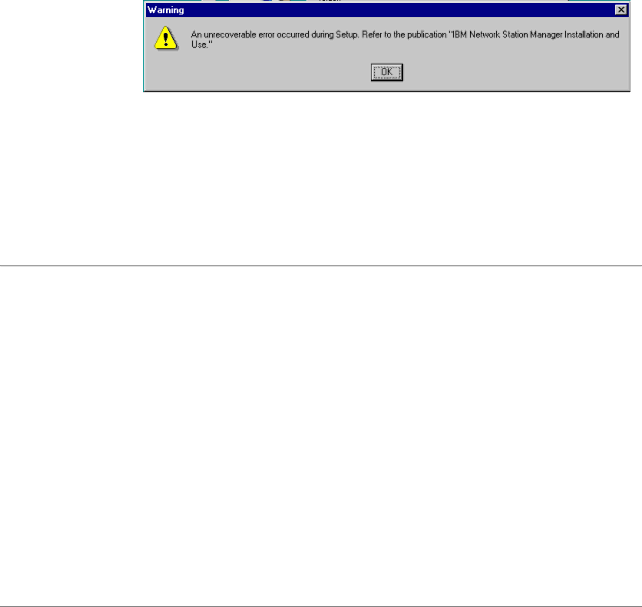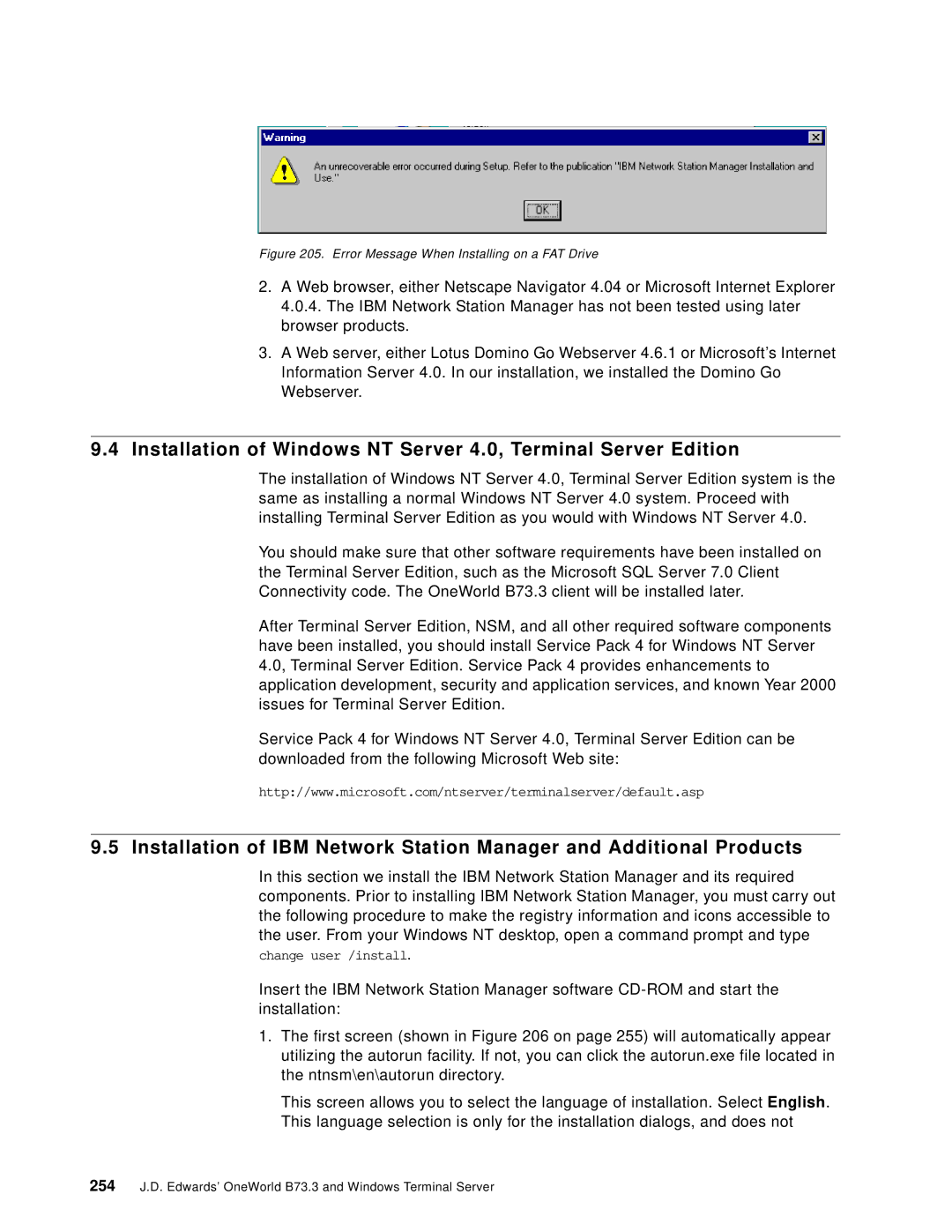
Figure 205. Error Message When Installing on a FAT Drive
2.A Web browser, either Netscape Navigator 4.04 or Microsoft Internet Explorer 4.0.4. The IBM Network Station Manager has not been tested using later browser products.
3.A Web server, either Lotus Domino Go Webserver 4.6.1 or Microsoft’s Internet Information Server 4.0. In our installation, we installed the Domino Go Webserver.
9.4Installation of Windows NT Server 4.0, Terminal Server Edition
The installation of Windows NT Server 4.0, Terminal Server Edition system is the same as installing a normal Windows NT Server 4.0 system. Proceed with installing Terminal Server Edition as you would with Windows NT Server 4.0.
You should make sure that other software requirements have been installed on the Terminal Server Edition, such as the Microsoft SQL Server 7.0 Client Connectivity code. The OneWorld B73.3 client will be installed later.
After Terminal Server Edition, NSM, and all other required software components have been installed, you should install Service Pack 4 for Windows NT Server 4.0, Terminal Server Edition. Service Pack 4 provides enhancements to application development, security and application services, and known Year 2000 issues for Terminal Server Edition.
Service Pack 4 for Windows NT Server 4.0, Terminal Server Edition can be downloaded from the following Microsoft Web site:
http://www.microsoft.com/ntserver/terminalserver/default.asp
9.5 Installation of IBM Network Station Manager and Additional Products
In this section we install the IBM Network Station Manager and its required components. Prior to installing IBM Network Station Manager, you must carry out the following procedure to make the registry information and icons accessible to the user. From your Windows NT desktop, open a command prompt and type change user /install.
Insert the IBM Network Station Manager software
1.The first screen (shown in Figure 206 on page 255) will automatically appear utilizing the autorun facility. If not, you can click the autorun.exe file located in the ntnsm\en\autorun directory.
This screen allows you to select the language of installation. Select English. This language selection is only for the installation dialogs, and does not
254J.D. Edwards’ OneWorld B73.3 and Windows Terminal Server
